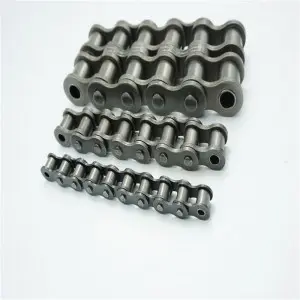The agricultural supply chain is a complex network of activities connecting farmers, producers, distributors, retailers and customers. This intricate network ensures the efficient production, processing and distribution of crops and livestock to meet the growing demand for agricultural products. To understand the dynamics of this chain, it is crucial to understand the various touchpoints that play an important role in its operation.
1. Breeding and production:
The agricultural supply chain is based on the farms and production units that grow crops and raise livestock. This initial point of contact involves all activities related to growing, cultivating and cultivating crops as well as raising, raising and feeding animals. Keeping crops healthy, implementing sustainable farming practices, and ensuring livestock welfare all help improve the quality of products entering the supply chain.
2. Harvesting and processing:
Once the crops are ready to be harvested and the animals are suitable for harvesting, the next touchpoint comes into play. Harvesting involves using efficient techniques to harvest crops at the right time, maintaining their quality and nutritional value. At the same time, livestock are humanely processed for high-quality meat, poultry or dairy products. Proper harvesting and processing practices are critical to maintaining product integrity, minimizing loss and ensuring food safety.
3. Packaging and storage:
Packaging plays a vital role in the agricultural supply chain as it protects products during transport and extends their shelf life. This touchpoint includes selecting appropriate packaging materials, ensuring proper labelling, and complying with regulatory requirements. In addition, the storage of agricultural products requires adequate facilities with controlled environments to prevent spoilage, pest infestation or deterioration of quality.
4. Transportation and distribution:
Efficient transport of agricultural products from farms and production units to consumers requires organized distribution networks. This touchpoint includes selecting the appropriate mode of transport, such as truck, rail or ship, and optimizing logistics processes. Timeliness, cost-effectiveness and maintaining product integrity during transit are key considerations. In addition to retail stores, direct-to-consumer channels such as online marketplaces have become very popular in recent years.
5. Retail and Marketing:
At retail touchpoints, consumers have direct access to produce. Retailers play an important role in maintaining product quality, managing inventory and meeting customer needs in a timely manner. Marketing campaigns aimed at promoting produce, enhancing brand image and effectively communicating product attributes are critical to driving consumer interest and sales.
6. Consumer feedback and demand:
The final touchpoint in the agricultural supply chain is the consumer. Their feedback, needs and buying habits provide valuable insights for all stakeholders in the supply chain. Consumer preferences for organic, locally sourced or sustainably produced goods guide future strategies implemented by farmers, producers and retailers. Understanding and adapting to changing consumer preferences is critical to the sustainability and growth of agricultural supply chains.
Agricultural supply chains demonstrate the interconnectedness of the various touchpoints that contribute to the supply of food and agricultural products. From agriculture and production to retail and consumer feedback, every touchpoint plays a key role in ensuring the smooth flow of goods and meeting changing consumer demands. By understanding these integral touchpoints, stakeholders within the supply chain can work together to strengthen and optimize this critical sector, drive sustainable agriculture and enhance food security.
Post time: Aug-17-2023

